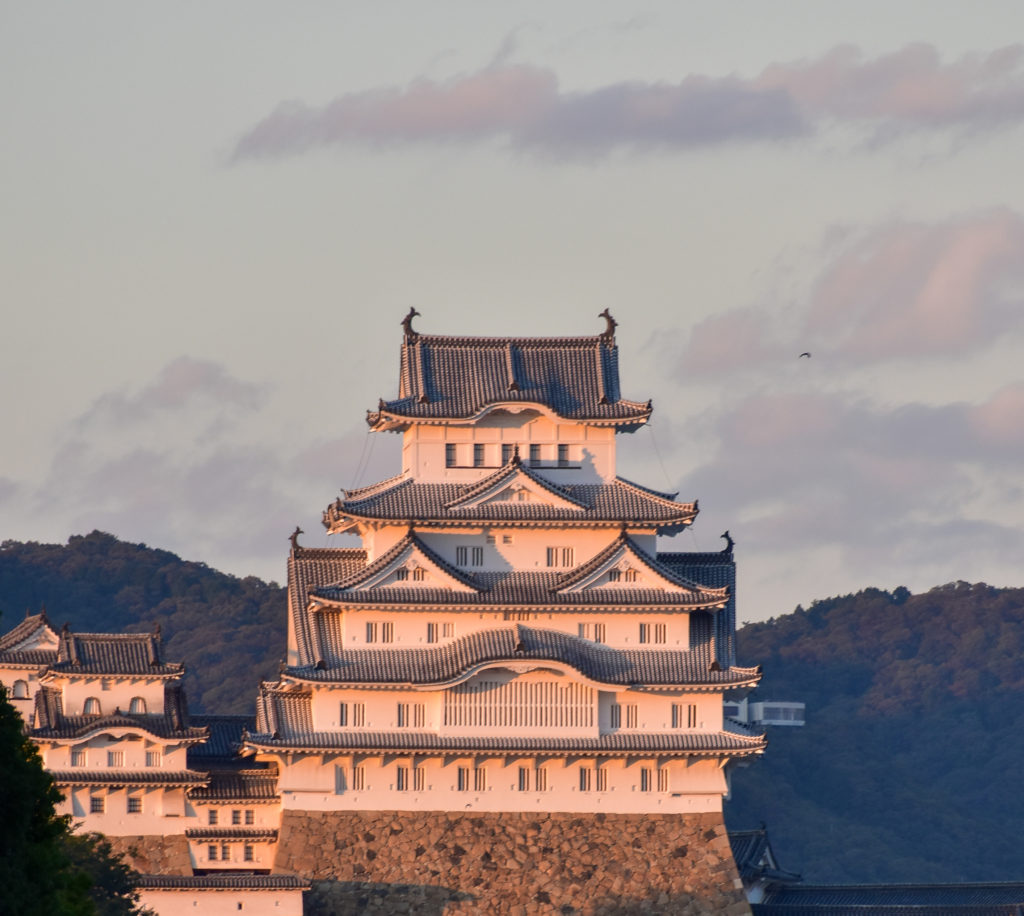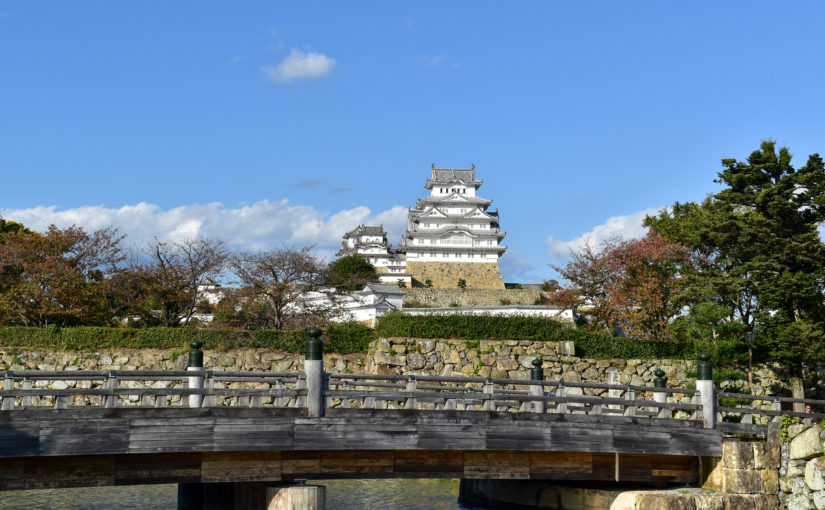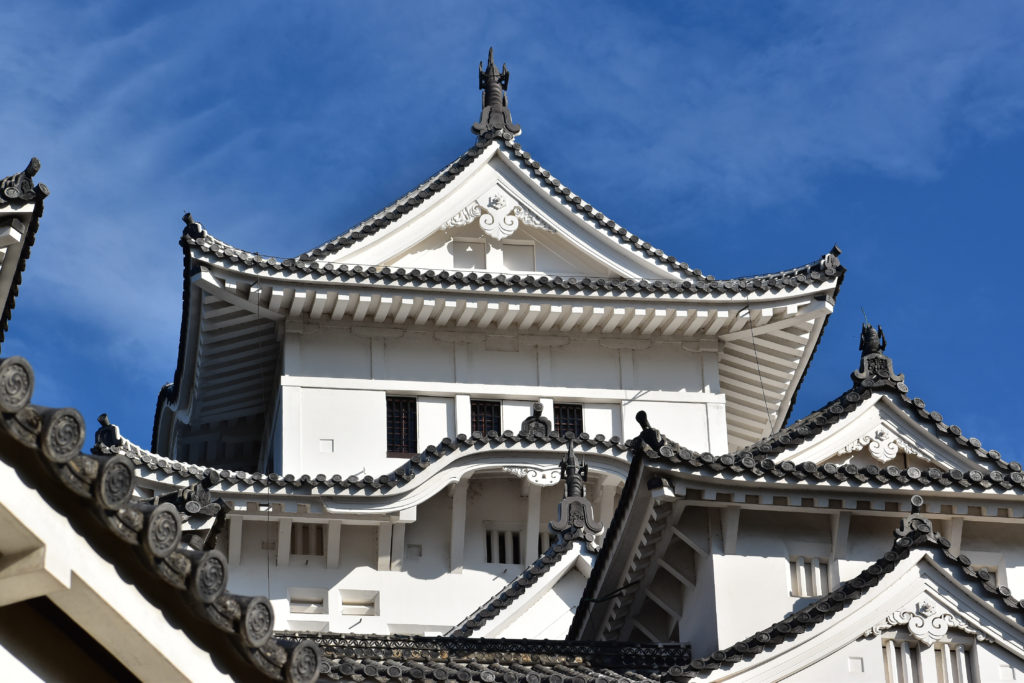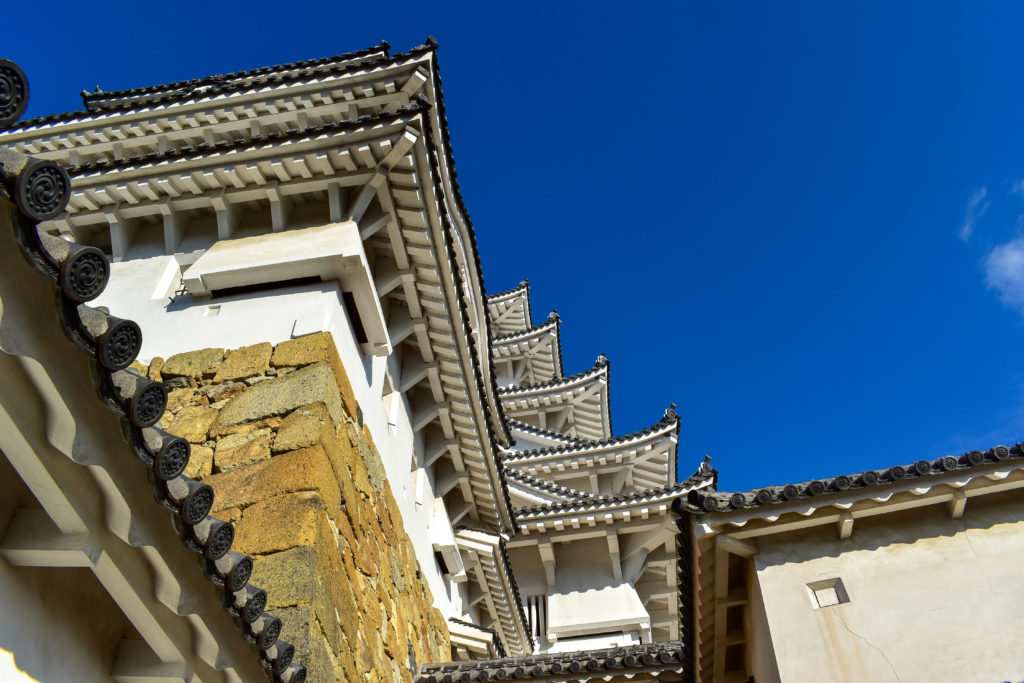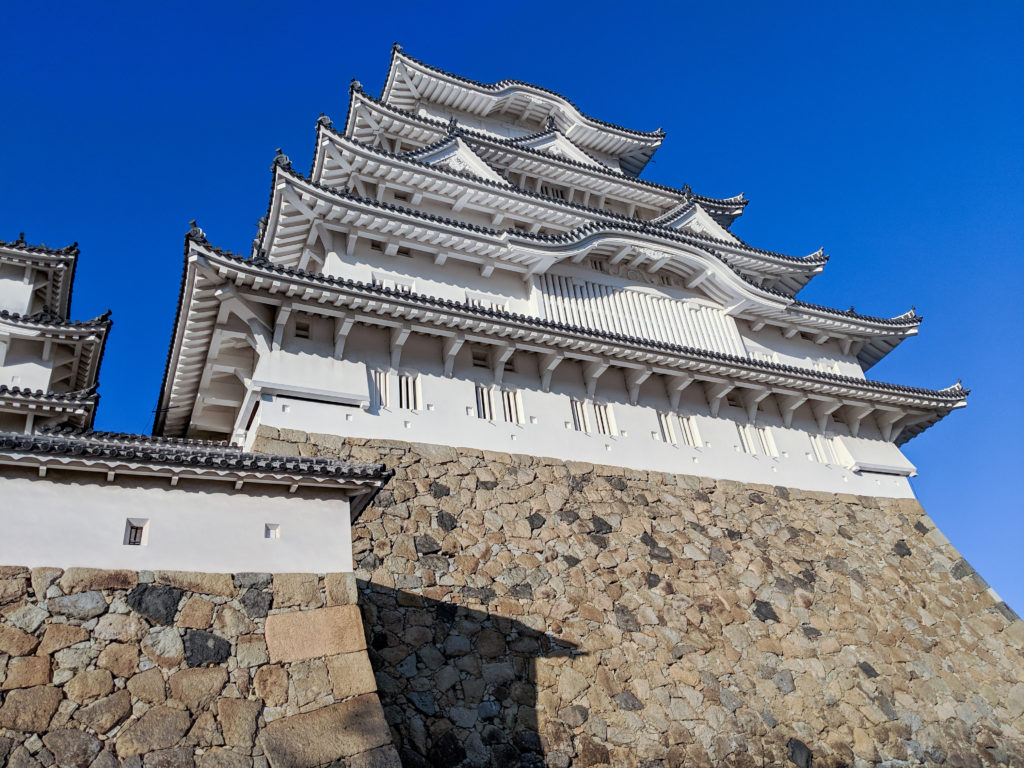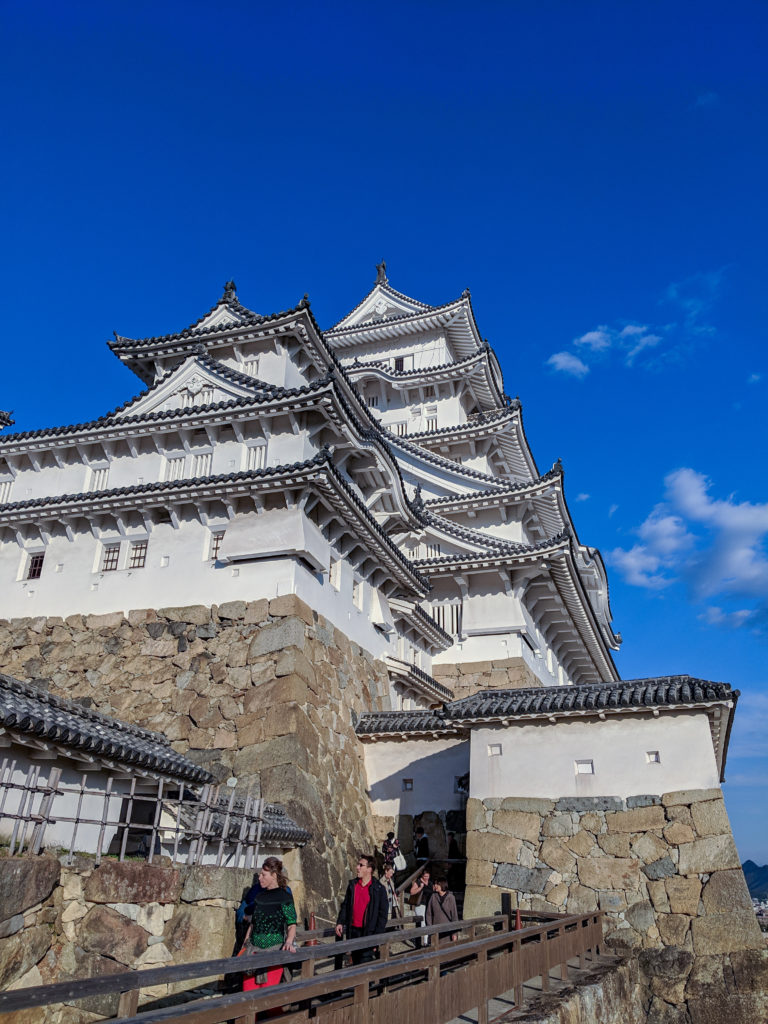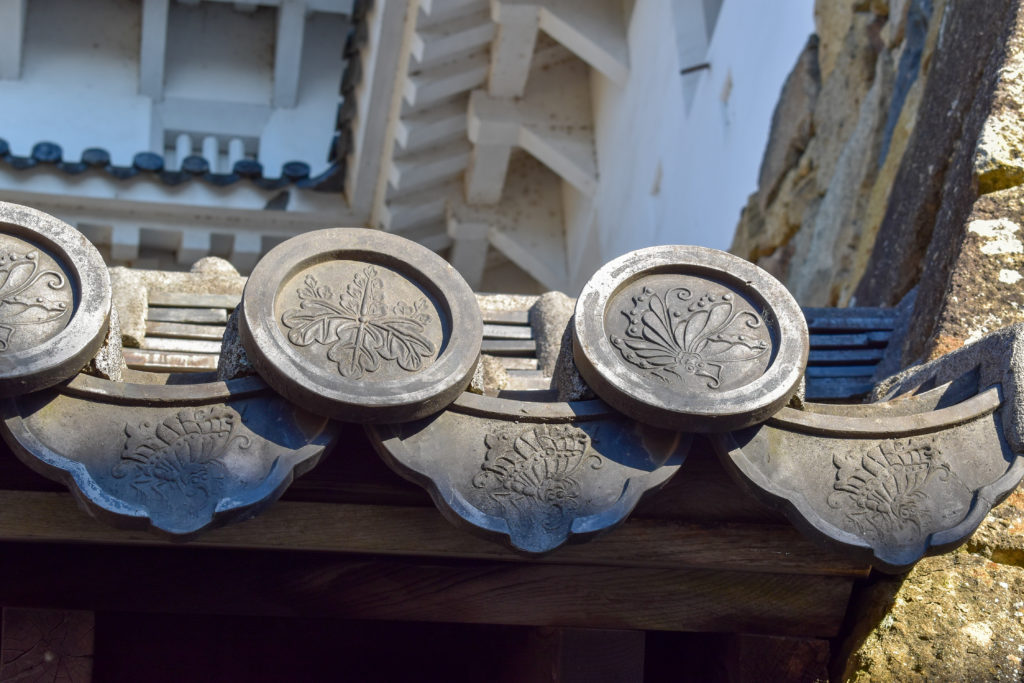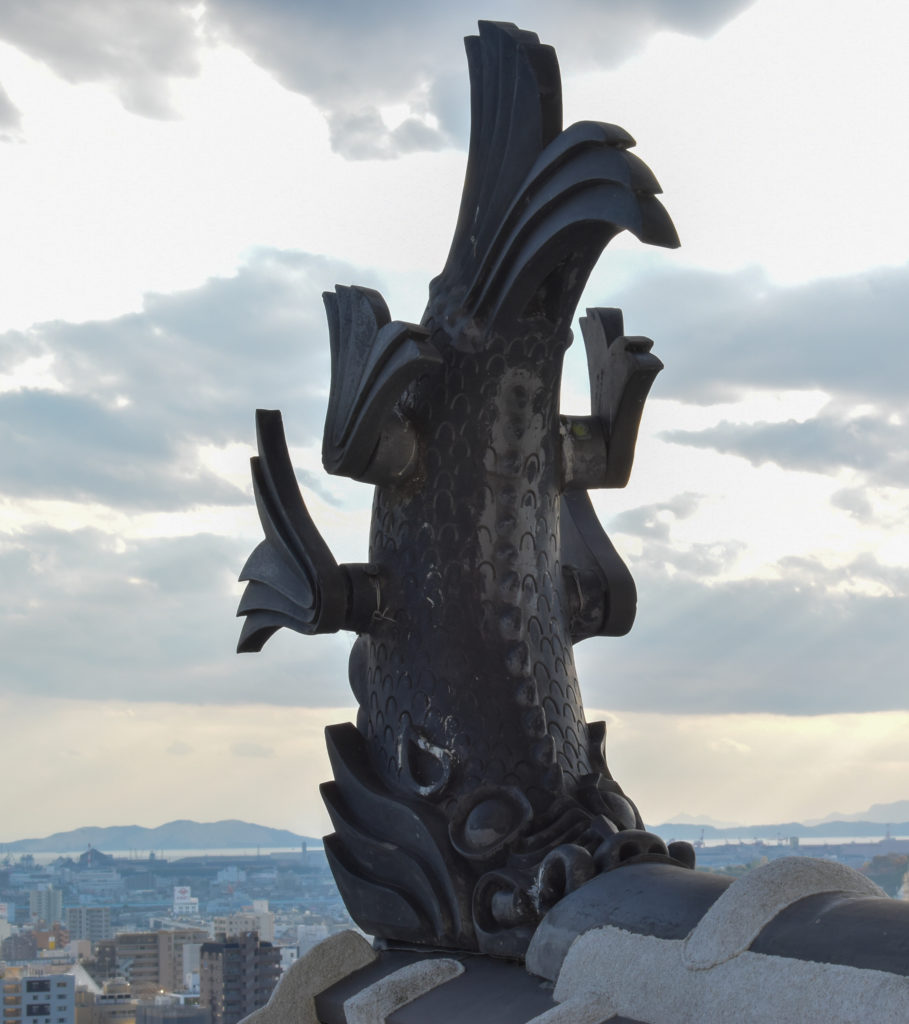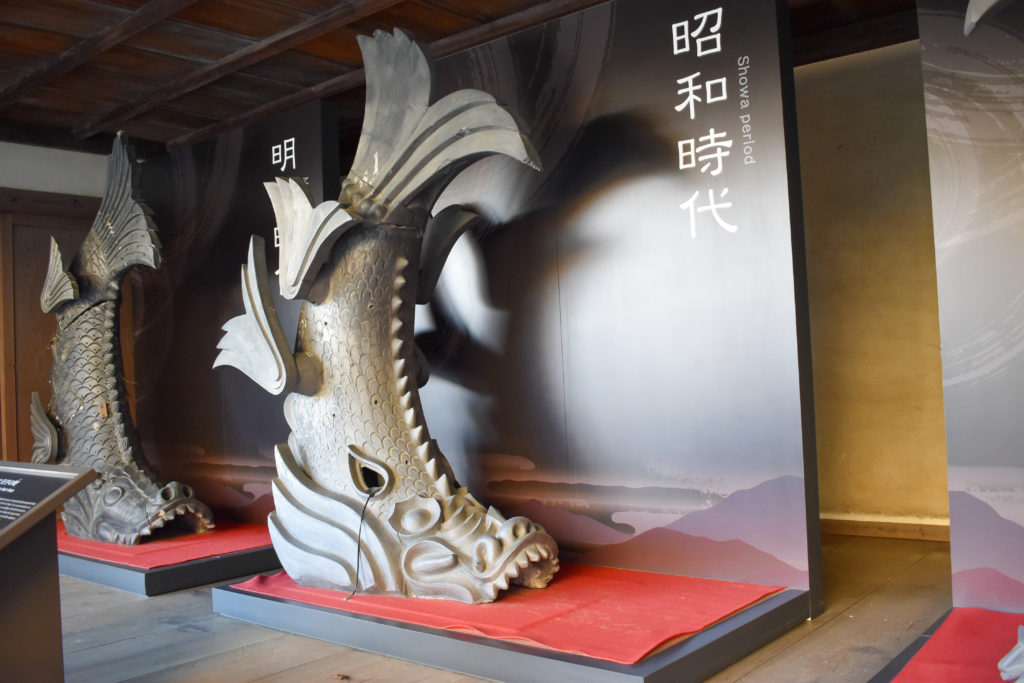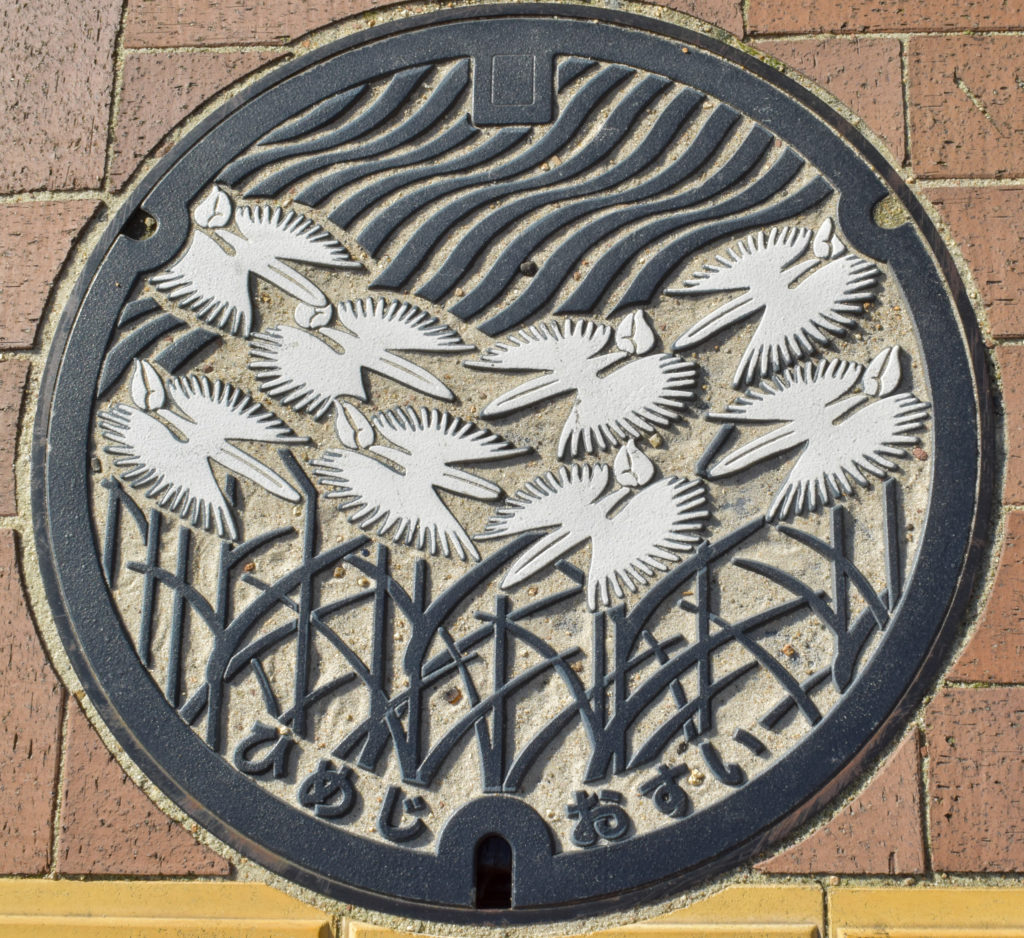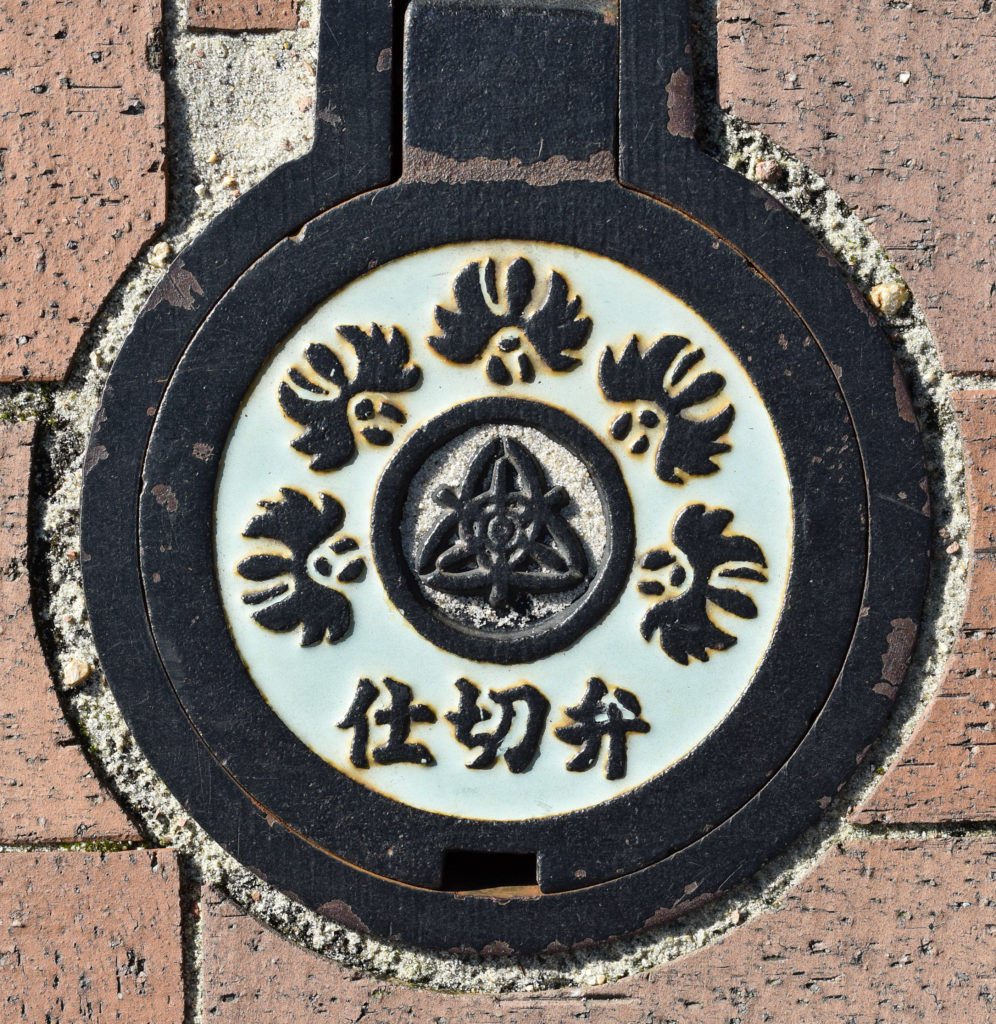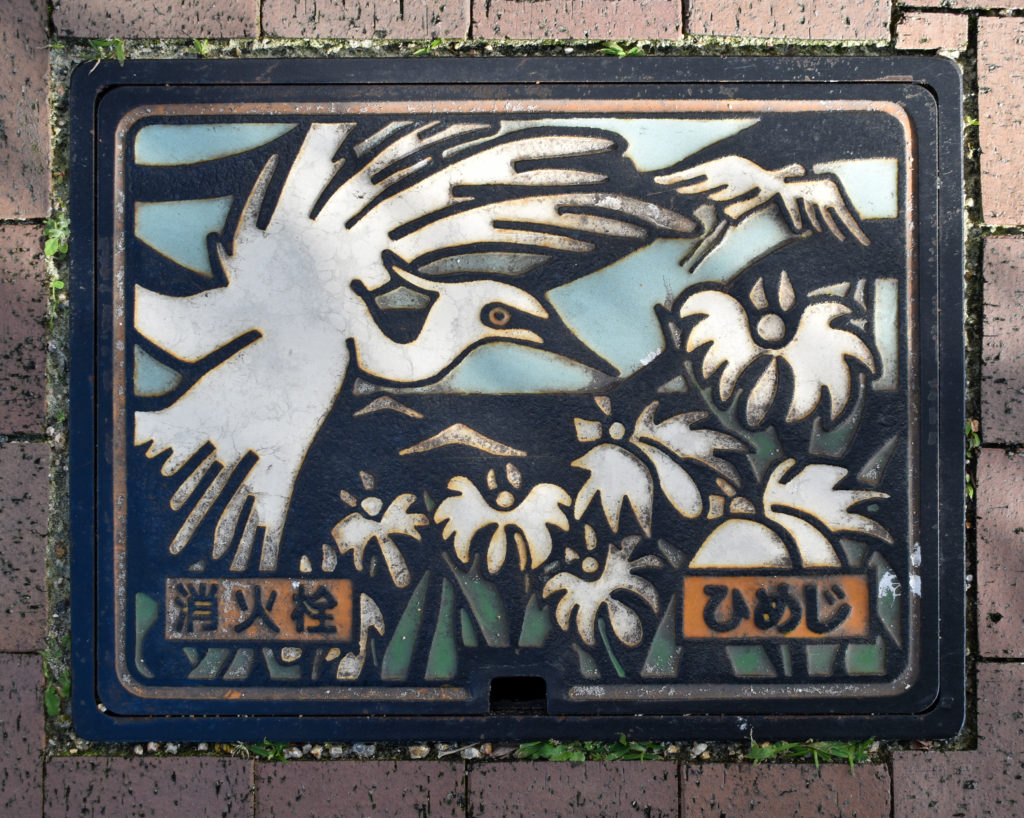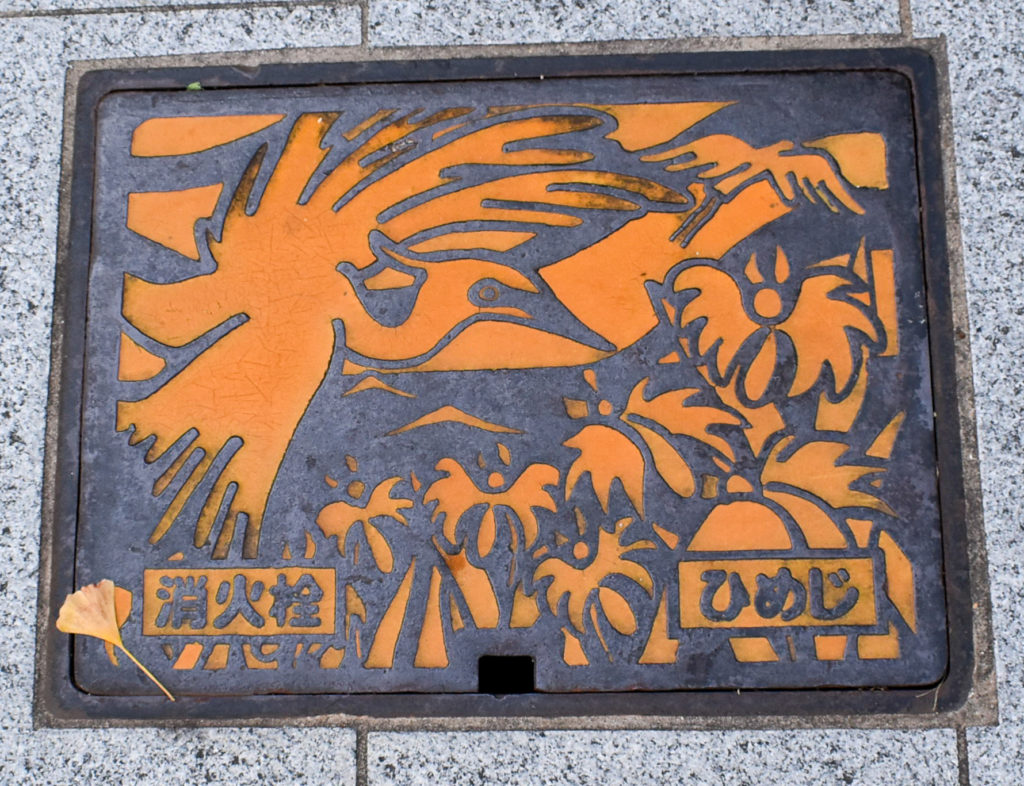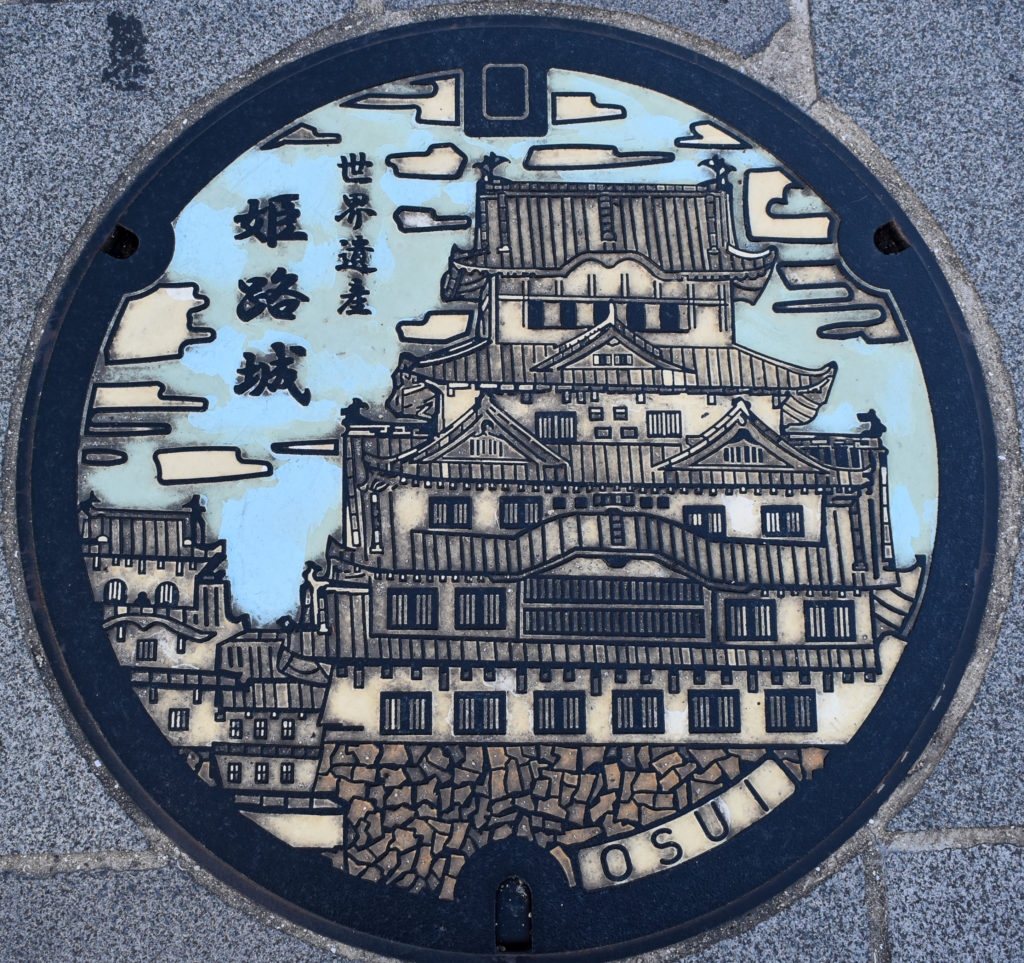While we were in Japan last fall we stopped in Himeji to see Himeji Castle, also called “White Egret Castle” or “White Heron Castle” due to its distinctive white exterior.
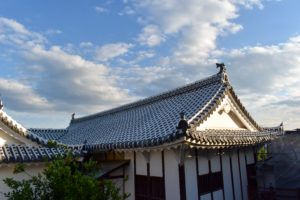
A significant part of the white look is the mortar that covers the seams of the tiles on the roof. Keeping it bright white requires periodic restoration, and we were fortunate to visit just a few years after extensive work was completed in 2015. Still, there was work being done on buildings around the castle, so here’s a closeup of a just-completed section of roof.
The featured picture at the top of this post is the view of the castle from the street just outside the garden/park area in front of the castle. Here are a few other shots we got of the exterior as we made our way to and around the castle:
The main gate to the complex was large and led straight into a courtyard, but the next gate into a passage leading up the hill toward the castle was not built with tall people in mind. Or perhaps more accurately: it was built with defense against tall or mounted visitors in mind. There was another gate later on that didn’t even clear my shoulders, but that one was well padded to keep visitors from bumping their heads too hard.
From a distance you can see the caps on the bottom of each row of roof tiles, but once you get close you can see the details on them. Every single one was stamped with a pattern of some sort: these appear to just be decorative but one spot was labeled to say it was the family crest.
The inside furnishings were much more for defense and support of soldiers than for living quarters for nobles, which is how many surviving European castles tend to be designed. All the windows had platforms inside them for defenders to stand on, even the upper row on the taller floor at the bottom. Many of the walls were movable, so the space could be opened up or partitioned off, but in the solid walls there were lots of racks for weapons. There were also plenty of holes along the outer wall to drop things down on attackers below, especially in the corners under the eaves of the roof levels where the windows couldn’t see.
Once we were to the higher roof levels we could see just how big the fish that decorate the ends of the roof peaks are. Obviously there’s not much to get a sense of scale in the first picture of the fish with just the roof in the foreground, but the second picture is a full-size replica of the previous style of fish, and it reaches nearly to the ceiling inside the room in the museum section.

The view from the castle was also pretty impressive. It was built on a hill, so it started with a decent vantage, then it was tall enough to see over the city below it, even with modern buildings. The large road that’s centered in the picture links the train station to the castle complex.
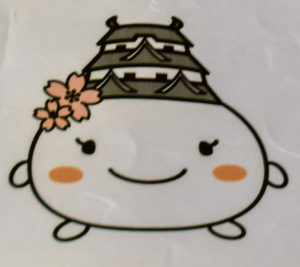
We didn’t know it till we got to Japan, but Japanese cities often have cute little city mascots (apparently called yuru-chara). They especially show up on souvenirs and signs, and Himeji naturally chose a representation of the castle. We didn’t get a great picture of the castle mascot, but to the left is a cropped down piece of a sign.
Another unique thing about Japan that surprised us was that the manhole covers were often designs unique to the city and colored in for extra style. Below are the various ones we found in Himeji. The only place we saw the castle was just outside the train station, but the other designs here showed up frequently as we walked around.
After we finished in the castle we made our way back to the train station. This was the view down the street from there near sunset, looking above the various stoplights and street signs:
